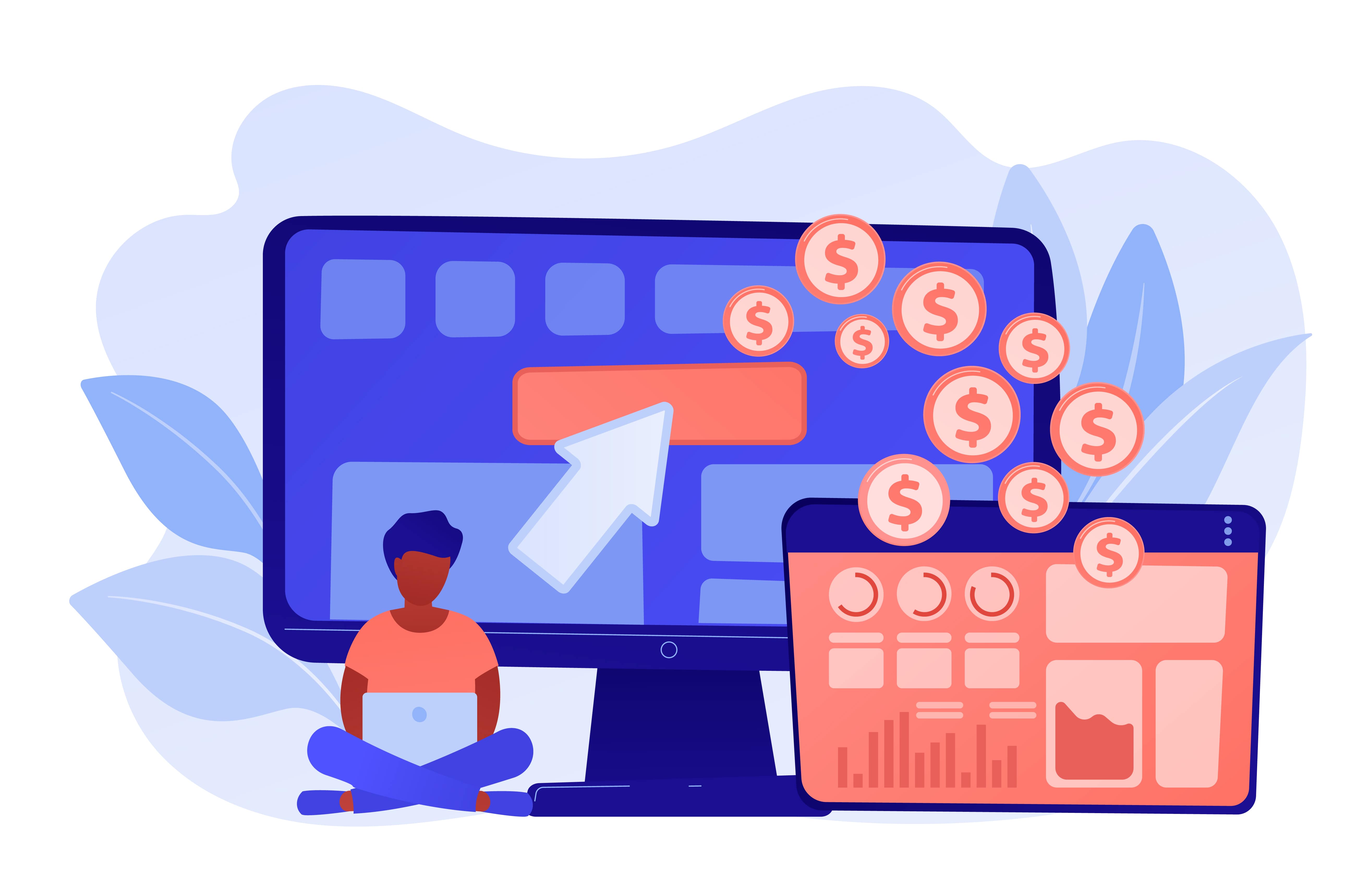Home

The importance of user experience in app development
- Details
- By:
- Category: Articles
- Hits: 3699
The User Experience Revolution: Why UX is the Kingmaker in Mobile Apps Development
In the fast-paced world of mobile apps development, one factor reigns supreme: user experience (UX). It's the invisible force that can make or break an app's success, turning a simple idea into a global phenomenon or relegating a promising concept to the digital graveyard. But what exactly is UX, and why has it become the holy grail of app development?
Defining UX: More Than Just Pretty Buttons
User experience encompasses every aspect of a user's interaction with an app. It's not just about aesthetics, although a visually appealing interface is certainly part of it. UX is about creating an intuitive, efficient, and enjoyable journey for the user from the moment they tap the app icon to the second they close it.
In the realm of mobile apps development, UX is the secret sauce that keeps users coming back. It's the difference between an app that users grudgingly tolerate and one they enthusiastically recommend to friends.
The Numbers Don't Lie: UX's Impact on Success
If you're skeptical about the importance of UX, let the statistics convince you. According to a study by Forrester Research, every dollar invested in UX brings 100 dollars in return. That's an ROI of 9,900%!
Moreover, 88% of online consumers are less likely to return to a site after a bad experience. In the competitive world of mobile apps development, where users can easily switch to a rival app with a single tap, providing a superior UX isn't just nice to have—it's essential for survival.
Case Studies: UX Success Stories
Let's look at some real-world examples of how UX can make or break an app:
- Airbnb: When Airbnb revamped its app with a focus on UX, including personalized recommendations and a more intuitive booking process, they saw a 30% increase in bookings across platforms.
- Duolingo: This language learning app's success is largely attributed to its gamified UX. By making learning fun and addictive, Duolingo has amassed over 500 million downloads and 40 million active users.
- Robinhood: This stock trading app disrupted the finance industry with its user-friendly interface, making investing accessible to millennials. Its focus on simplicity and intuitive design has earned it over 13 million users.
Key Elements of Great UX in Mobile Apps Development
So, what makes for great UX in mobile apps development? Here are some key elements:
- Simplicity: The best apps are often the simplest. Think of the clean, uncluttered interface of apps like Instagram or WhatsApp.
- Consistency: Users should feel at home throughout the app. Consistent design elements and navigation patterns reduce cognitive load and make the app feel intuitive.
- Responsiveness: In mobile apps development, speed is crucial. Users expect instant responses to their actions. Even a one-second delay can lead to user frustration and abandonment.
- Personalization: Apps that tailor the experience to individual users, like Spotify's personalized playlists, create a sense of connection and value.
- Accessibility: Good UX is inclusive. It considers users with different abilities and ensures the app is usable by everyone.
The Dark Side: When Bad UX Strikes
To truly appreciate the importance of good UX, let's look at what happens when UX goes wrong. Remember Snapchat's infamous redesign in 2018? The update, which drastically changed the app's layout and functionality, was met with widespread user backlash. Over 1.2 million users signed a petition to revert the changes, and Snap Inc.'s stock price dropped by 6.1%, wiping out $1.3 billion in market value.
This cautionary tale underscores a crucial lesson in mobile apps development: never underestimate the power of UX, and always involve your users in major design decisions.
The Future of UX: What's Next in Mobile Apps Development?
As technology evolves, so does UX. Here are some trends shaping the future of UX in mobile apps development:
- Voice User Interfaces (VUI): With the rise of smart speakers and voice assistants, VUI is becoming increasingly important in app design.
- Augmented Reality (AR): Apps like Pokémon Go and IKEA Place have shown the potential of AR in creating immersive user experiences.
- AI-driven Personalization: Machine learning algorithms are enabling hyper-personalized experiences tailored to individual user behavior and preferences.
- Gesture-based Interfaces: As devices evolve, so do the ways we interact with them. Gesture-based interfaces are becoming more prevalent, requiring new approaches to UX design.
In conclusion, in the competitive landscape of mobile apps development, UX is not just a feature—it's the foundation upon which successful apps are built. It's the difference between an app that users tolerate and one they love. As technology continues to evolve, one thing remains constant: the apps that prioritize user experience will be the ones that thrive.
Remember, in the world of mobile apps development, the user is king. And UX? That's the crown jewel in your app's arsenal. So, the next time you're planning an app, ask yourself: "How can I make this experience not just functional, but delightful?" Your users—and your bottom line—will thank you.

Building an app from scratch - step-by-step guide to building an app
- Details
- By:
- Category: Articles
- Hits: 3769
Building an App from Scratch: A Step-by-Step Guide
In today's digital age, mobile apps have become an integral part of our daily lives. From ordering food to managing finances, there's an app for almost everything. But have you ever wondered what goes into creating these digital marvels? Let's embark on a journey through the fascinating world of mobile apps development, exploring each step of the process from conception to launch.
Step 1: Ideation - The Spark of Innovation
Every great app starts with an idea. Maybe you've identified a gap in the market, or you've thought of a way to solve a common problem. Take Uber, for instance. The founders simply wanted to solve the issue of hailing a taxi in San Francisco. That simple idea revolutionized transportation worldwide.
When brainstorming your app idea, consider these questions:
- What problem does your app solve?
- Who is your target audience?
- What unique features will set your app apart?
Remember, in the realm of mobile apps development, originality is key. With over 4.4 million apps available on the Google Play Store and Apple App Store combined (as of 2023), standing out is crucial.
Step 2: Market Research - Know Your Battlefield
Once you have your idea, it's time to dive deep into market research. This step is crucial in mobile apps development to ensure your app has a viable market.
For example, before developing Snapchat, Evan Spiegel and his team conducted extensive research on the social media landscape. They identified a desire among users for more ephemeral, in-the-moment sharing - a need that existing platforms weren't fulfilling.
Some key areas to research include:
- Competitor analysis
- Target audience preferences
- Current market trends
Step 3: Feature Planning - Mapping Your App's DNA
With your research in hand, it's time to plan your app's features. In mobile apps development, it's often best to start with a Minimum Viable Product (MVP) - a version of your app with just enough features to satisfy early users.
For instance, when Instagram first launched, it was solely a photo-sharing app. Features like Stories, Reels, and IGTV were added later as the app evolved.
Create a list of must-have features for your MVP, and a separate list of features you'd like to add in future updates.
Step 4: Design - The Face of Your App
Now comes the exciting part - designing your app. In mobile apps development, user experience (UX) and user interface (UI) design are crucial. Your app should not only look good but also be intuitive and easy to navigate.
Consider the success of apps like Airbnb or Duolingo. Their clean, user-friendly designs have played a significant role in their popularity.
Key design elements to focus on include:
- Color scheme
- Typography
- Layout
- Navigation flow
Step 5: Development - Bringing Your App to Life
This is where the real magic of mobile apps development happens. Depending on your target platforms, you'll need to choose between native development (separate versions for iOS and Android) or cross-platform development (one version for multiple platforms).
Popular programming languages for mobile apps development include:
- Swift or Objective-C for iOS
- Java or Kotlin for Android
- React Native or Flutter for cross-platform development
Remember, good coding practices are crucial. Clean, well-documented code will make future updates and maintenance much easier.
Step 6: Testing - Ironing Out the Kinks
Before your app hits the market, it needs to be thoroughly tested. In mobile apps development, testing is an ongoing process that continues even after launch.
Types of testing include:
- Functionality testing
- Usability testing
- Performance testing
- Security testing
Companies like Facebook and Google are known for their rigorous testing processes, often using beta testers to identify issues before wide release.
Step 7: Launch - Introducing Your App to the World
Congratulations! You're ready to launch your app. But in mobile apps development, launching is just the beginning.
Key steps in the launch process include:
- Optimizing your app store listing (App Store Optimization or ASO)
- Marketing your app through various channels
- Gathering and responding to user feedback
Remember Pokémon Go? Its viral launch in 2016 was a result of clever marketing combined with nostalgia and innovative augmented reality technology.
Step 8: Post-Launch - Nurturing Your Digital Offspring
In the world of mobile apps development, the work doesn't stop at launch. Continuous updates, bug fixes, and new feature rollouts are essential to keep your app relevant and user-friendly.
Take WhatsApp, for example. Since its launch in 2009, it has continuously evolved, adding features like voice calls, video calls, and end-to-end encryption in response to user needs and market trends.
Building an app from scratch is an exciting journey filled with challenges and rewards. Whether you're a budding entrepreneur or a curious tech enthusiast, understanding these steps can give you valuable insights into the world of mobile apps development. Who knows? Your app might be the next big thing that changes the world!

Recommended security practices for apps
- Details
- By:
- Category: Articles
- Hits: 3741
The Evolution of App Security: From Afterthought to Imperative
In the fast-paced world of mobile apps development, security has undergone a dramatic transformation. Once an afterthought in the rush to market, app security now stands at the forefront of development priorities. As our smartphones become increasingly central to our lives – from banking to social connections – the stakes have never been higher.
The Wild West Era of Early App Development
Cast your mind back to the early days of smartphones. Remember when downloading an app felt like a leap of faith? In those pioneering days of mobile apps development, security often took a backseat to speed and functionality. Developers raced to capitalize on the booming app market, sometimes leaving gaping vulnerabilities in their wake.
This cavalier approach came to a head in 2011 with a watershed moment in mobile security history: the discovery of the first mobile botnet. Suddenly, the theoretical risks became all too real. Malicious software could now hijack our phones, stealing everything from credit card details to personal photos.
The App Stores Step Up
As the threats evolved, so did the defenses. Tech giants like Apple and Google recognized the need to protect their ecosystems. The Apple App Store and Google Play Store became the first line of defense, implementing rigorous review processes and automated scanning techniques.
Apple, in particular, took a significant leap forward in 2012 with the introduction of iOS 6. This update brought "sandboxing" to the iPhone, a technique that corrals each app into its own isolated environment. It was like giving each app its own private room, preventing it from snooping on its neighbors or causing mischief elsewhere on the device.
The Rise of Security-First Development
Today, the mobile apps development landscape looks radically different. Security isn't just a box to tick – it's woven into the very fabric of the development process. From the first line of code to the final user interface polish, security considerations touch every aspect of app creation.
Let's break down some of the key focus areas in modern app security:
- Data Encryption: Remember the scandals of celebrity photo leaks? They underscored the critical importance of robust encryption. Now, industry-standard protocols like SSL/TLS for data in transit and AES for data at rest are non-negotiable in reputable apps.
- Authentication Mechanisms: Gone are the days when a simple password sufficed. Multi-factor authentication has become the norm, with biometrics like fingerprint and face recognition adding extra layers of security.
- Secure Coding Practices: Developers now arm themselves against common vulnerabilities like SQL injection and cross-site scripting (XSS). It's a constant cat-and-mouse game with hackers, requiring ongoing education and vigilance.
- Regular Security Testing: The "build it and forget it" mentality is dead. Continuous testing using tools like OWASP ZAP or Burp Suite has become standard practice in mobile apps development.
The Numbers Don't Lie
The focus on app security isn't just developer paranoia – it's a response to very real and growing threats. According to McAfee's 2021 Mobile Threat Report, mobile malware increased by a staggering 27% in just the first quarter of 2021.
But there's good news too. The industry is rising to the challenge. In 2020 alone, Google Play removed over 100,000 malicious apps, while Apple's App Store rejected more than 150,000 apps for security concerns.
The Future of App Security
As we look to the future of mobile apps development, several trends are shaping the security landscape:
- AI-Powered Security: Machine learning algorithms are being deployed to detect anomalies and potential threats in real-time, providing an extra layer of protection.
- Blockchain Integration: Some developers are exploring how blockchain technology can enhance app security, particularly for financial and healthcare apps.
- IoT Considerations: As our apps increasingly interact with smart home devices and wearables, new security challenges and solutions are emerging.
- Regulatory Compliance: With regulations like GDPR and CCPA raising the stakes for data protection, app security is no longer just a technical issue – it's a legal imperative.
The mobile apps development industry has come a long way from its "Wild West" beginnings. Today, security isn't just a feature – it's the foundation upon which great apps are built. As users, we can take comfort in knowing that the apps we rely on daily are now built with our security and privacy as top priorities. The next time you tap that app icon, remember the invisible shield of security measures working tirelessly to keep your digital life safe and secure.

Building a native app vs. a web app: pros and cons
- Details
- By:
- Category: Articles
- Hits: 4198
The Great App Debate: Native vs. Web - Choosing Your Mobile Strategy
In the fast-paced world of mobile apps development, one question continues to spark heated discussions among developers and business leaders alike: Should you build a native app or a web app? As smartphones become increasingly central to our daily lives, this decision can make or break your mobile strategy. Let's dive into the pros and cons of each approach, exploring real-world examples and current trends to help you make an informed choice.
Native Apps: The Power Players
When it comes to delivering a top-notch user experience, native apps reign supreme. These applications are built specifically for iOS or Android, leveraging the full potential of the device's hardware and software features. Think of the silky-smooth animations in your favorite mobile game or the lightning-fast response of your go-to productivity app - that's the native app advantage in action.
Take Snapchat, for example. This social media giant relies heavily on native app features like camera access and augmented reality filters to create its unique, immersive experience. Such functionality would be challenging, if not impossible, to replicate in a web app.
However, this power comes at a price. Native app development typically requires expertise in multiple programming languages and platforms, driving up costs and development time. According to a survey by Clutch, the average cost to develop a native app ranges from $40,000 to $730,000, depending on its complexity.
Web Apps: The Versatile Contenders
On the flip side, web apps offer a more flexible and cost-effective approach to mobile apps development. These applications run in a web browser, making them accessible across a wide range of devices without the need for separate versions for iOS and Android.
Consider the success of the Financial Times. In 2011, they bucked the trend of native apps, opting instead for a web app. This decision allowed them to reach a broader audience across devices while maintaining control over their content and user data. The result? Within 10 months, the web app had attracted more subscribers than the native iOS and Android apps combined.
Web apps also shine when it comes to updates and maintenance. Unlike native apps, which require approval from app stores for each update, web apps can be updated instantly and simultaneously for all users. This agility can be a game-changer in fast-moving industries.
The Hybrid Approach: Best of Both Worlds?
As the mobile apps development landscape evolves, many companies are turning to hybrid solutions that aim to combine the best of both worlds. Frameworks like React Native and Flutter allow developers to create apps that feel native but can run on multiple platforms.
Airbnb, for instance, initially used React Native to accelerate its mobile apps development. While they eventually returned to fully native apps, the hybrid approach allowed them to iterate quickly and reach a wider audience during a critical growth phase.
Current Trends: Where Is Mobile Apps Development Heading?
The mobile app market is constantly shifting, and recent trends offer valuable insights for decision-makers:
- Native App Dominance: According to App Annie's State of Mobile report, native apps accounted for a whopping 87% of time spent on mobile devices in 2021. This statistic underscores the enduring appeal of native apps for engaged, frequent users.
- Rise of Progressive Web Apps (PWAs): PWAs are web apps that offer a native app-like experience, complete with offline functionality and push notifications. Companies like Twitter and Pinterest have seen significant engagement increases after launching PWAs.
- Cross-Platform Development: The popularity of cross-platform development is soaring. A Statista survey revealed that 43% of mobile developers used cross-platform frameworks in 2021, up from 39% in 2020.
Making the Right Choice for Your Project
Ultimately, the decision between native and web apps depends on your specific project needs and goals. Here are some key factors to consider:
- If your app requires high performance, deep integration with device features, or a polished, platform-specific UI, native is likely your best bet.
- If you need to reach a wide audience quickly, have budget constraints, or prioritize rapid updates, a web app might be the way to go.
- Consider a hybrid or PWA approach if you want to balance native-like performance with cross-platform compatibility.
Remember, the world of mobile apps development is ever-changing. Stay informed about the latest trends and technologies, and don't be afraid to reassess your strategy as your needs evolve. Whether you choose native, web, or a hybrid approach, the key is to focus on delivering value to your users in the most effective way possible.

 ES
ES  KO
KO  NL
NL  CS
CS  HR
HR  PT
PT  RO
RO  SV
SV  IT
IT  EL
EL  DE
DE  FR
FR  PL
PL  EN
EN